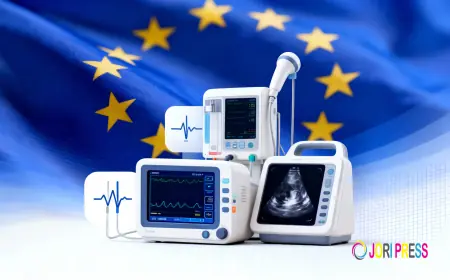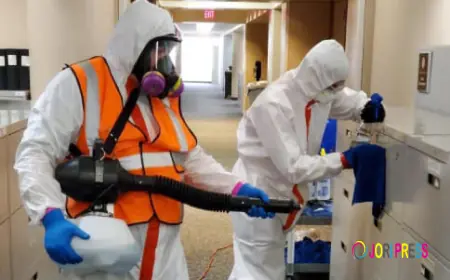HACCP Training: Mastering Food Safety for Food Safety Coordinators
HACCP isn’t just a box to tick. When applied thoughtfully, it’s a living system that shapes how every ingredient, process, and finished product is managed.
As a Food Safety Coordinator, you’re juggling more than just checklists—you’re the invisible guardian ensuring meals are safe before they even reach the consumer. HACCP—Hazard Analysis and Critical Control Points—is your toolkit, your playbook, your secret weapon in preventing foodborne mishaps. But let’s be honest, HACCP isn’t just a box to tick. When applied thoughtfully, it’s a living system that shapes how every ingredient, process, and finished product is managed.
You know what makes HACCP fascinating? It’s part science, part detective work, and part human intuition. You’re reading data, observing behavior, and sometimes following instincts honed by experience. That combination is what transforms routine checks into actionable, effective safety measures.
HACCP 101: More Than Just Acronyms
HACCP might seem intimidating at first—seven principles, complex charts, critical limits—but at its core, it’s a simple philosophy: anticipate hazards before they become problems. Think of it like maintaining a fleet of delivery trucks. You don’t wait for a breakdown to happen; you monitor oil levels, tire pressure, and engine performance to avoid accidents. HACCP works the same way.
Critical Control Points, or CCPs, are your checkpoints—the red flags along a production line. These are moments where intervention can prevent contamination, whether it’s bacterial, chemical, or physical. And as a coordinator, your role is to ensure that these checkpoints aren’t just theoretical—they’re implemented, monitored, and verified in real time.
Why HACCP Is Indispensable for Packaged Foods
Let’s talk about packaged foods. On paper, they seem stable, prepped for shelf life, and ready to grab-and-go. But behind that convenience lies a complex ecosystem: multiple suppliers, diverse ingredients, extended storage times, and varying transportation conditions. One misstep, and the risk escalates.
Temperature control is one of the biggest culprits. Even a few hours outside the recommended range can encourage bacterial growth or reduce product integrity. Add allergens, chemical residues, and potential foreign objects to the mix, and you start to see why rigorous HACCP training is non-negotiable. It’s not bureaucracy; it’s a safety net that saves both brands and consumers from disaster.
The Coordinator’s Role: More Than Just Oversight
Being a Food Safety Coordinator isn’t about walking through a factory with a clipboard—it’s about thinking, anticipating, and communicating. You’re the link between operators on the floor, suppliers, quality teams, and management. Your job is to ensure that HACCP procedures aren’t theoretical—they’re part of daily workflow.
You need to know the production line intimately: where temperatures fluctuate, where cross-contamination could occur, and where human error is most likely. Then comes the coaching: guiding teams to understand why procedures matter and empowering them to act when something seems off. And yes, sometimes it’s subtle—like noticing a small bulge in a package or a batch that’s a shade off color. Those tiny cues are often the difference between safety and risk.
Real-World Example: Frozen Meals
Let’s picture a frozen meal line. It’s not glamorous, but it’s a perfect illustration:
-
Meat stored at -18°C, constantly monitored.
-
Pasta cooked to precise temperatures before packaging.
-
Tray sealing ensures no contamination enters post-cooking.
-
Metal detectors catch stray fragments.
Every step is a HACCP. And when deviations occur—say, a probe registers slightly off temperature—corrective action protocols kick in immediately. Thanks to HACCP training, staff know precisely how to respond. No guessing, no panic, just systematic problem-solving.
Continuous Improvement: It’s Never “Done”
HACCP isn’t a “set and forget” system. As a coordinator, you’re always looking for patterns, trends, and anomalies. Perhaps certain suppliers show recurring minor deviations, or a particular shift tends to miss documentation. That’s where coaching, retraining, and procedural tweaks come into play.
You’ll also notice seasonal impacts: summer heat can challenge cold chains, while holidays might push production lines harder than usual. HACCP training teaches you to anticipate these variables, ensuring that safety isn’t compromised under changing conditions.
Verification and Record-Keeping: Your Safety Backup
Verification isn’t just double-checking boxes. It’s observing operations, reviewing logs, and confirming that CCPs function correctly. Think of it like a safety net—you’re catching potential errors before they become incidents.
Records are equally important. They’re your story: proof that checks were completed, deviations addressed, and systems validated. During inspections or audits, detailed records show regulators that food safety isn’t just talk—it’s embedded in daily operations.
The Human Element: Communication and Culture
Here’s a subtle but crucial truth: HACCP isn’t effective without people. You can have the most rigorous system, but if operators don’t understand its purpose or importance, gaps appear. Food Safety Coordinators often find themselves as educators, mentors, and problem-solvers.
You know what works best? Leading by example. Show teams why monitoring matters. Share stories of potential mishaps or near-misses. Foster a culture where reporting deviations is encouraged, not punished. When the human element aligns with procedural rigor, HACCP works seamlessly.
Food Safety and Consumer Confidence
Why does this all matter? Because HACCP training directly influences trust. When packaged foods arrive safely, consumers feel confident, brands earn loyalty, and the market avoids costly recalls or reputational damage. Coordinators, in essence, are the invisible guardians of public trust.
It’s easy to forget the end consumer, but every spreadsheet, audit, and temperature check ultimately protects someone’s meal. That’s a responsibility—and a privilege—that shouldn’t be underestimated.
Bringing HACCP Principles Home
Even if your role is confined to factories or processing plants, the mindset translates everywhere. Think of it as a lens: observing hazards, evaluating risk, and taking action. You might notice subtle improvements in personal practices—proper storage at home, careful handling of ingredients, or mindfulness about expiration dates.
HACCP is, in a way, training your intuition. It teaches structured thinking while reinforcing attention to detail—a combination that benefits both professional and personal spheres.
Final Thoughts: The Heart of HACCP
At its essence, HACCP training equips Food Safety Coordinators to manage risk intelligently, confidently, and systematically. It’s not just about compliance; it’s about empowering teams, safeguarding consumers, and building a culture of responsibility.
You don’t need a laboratory coat to appreciate the sophistication of HACCP. Each product, process, and procedure reflects careful planning, thoughtful monitoring, and vigilant oversight. As coordinators, your role is to ensure that system hums along smoothly—every day, every shift, every line.
And when that happens, the result is more than safe packaged foods—it’s a reassuring promise delivered to every table, shelf, and kitchen. That’s what makes HACCP both powerful and profoundly human.
What's Your Reaction?
 Like
0
Like
0
 Dislike
0
Dislike
0
 Love
0
Love
0
 Funny
0
Funny
0
 Angry
0
Angry
0
 Sad
0
Sad
0
 Wow
0
Wow
0



















































